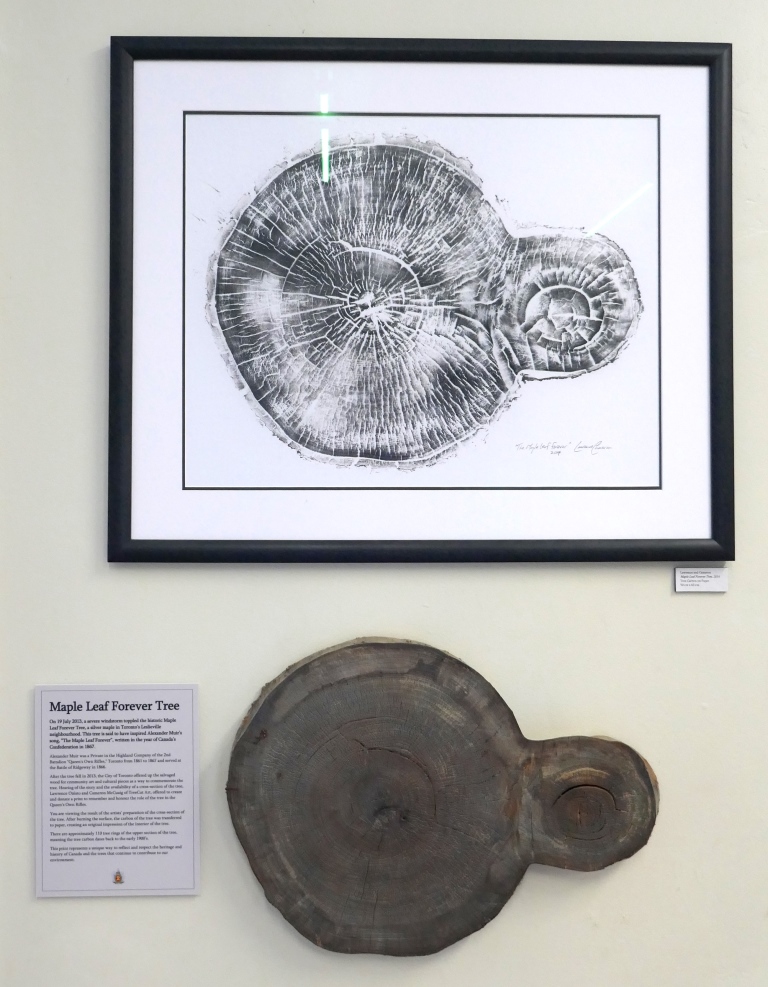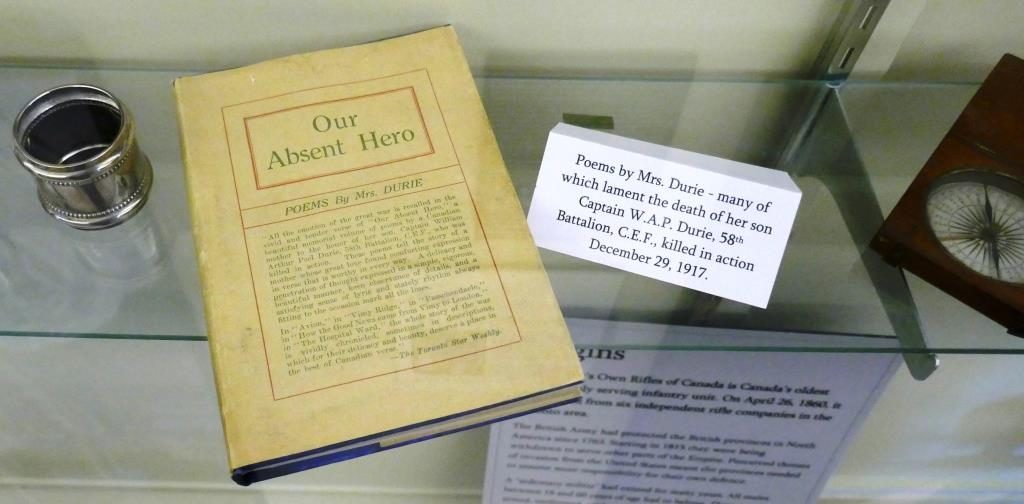On the third floor of Casa Loma is a completely separate museum, the Queen’s Own Rifles of Canada Regimental Museum and Archives. My visit to the museum answered two questions I’d had.
1) What was the story behind “Our Absent Hero: Poems in Loving Memory of Captain William Arthur Peel Durie, 58th Battalion, C.E.F.” by a “Mrs. Durie” (1920)?
At the Queen’s Own Rifles Museum, I noticed a book in a display case (above) which is also in the collection of the Ontario Historical Society’s library. I remember cataloguing this book and wondering about its story. Also in the display case were other Durie family items, donated by Miss Helen Durie, daughter of Lieutenant Colonel W.S. Durie, including eyeglasses, a paperweight, cuff links (made from two 1884 US dimes), and a large silver shooting trophy (1861).
Captain William A.P. Durie, the subject of the book, was killed in action December 29, 1917, at St. Emilie, France. Two months previously, at Passchendale, Captain Durie had returned to the field under fire five times to recover the wounded. A hero indeed.
A 1918 biographical sketch from Upper Canada College’s College Times notes that, “Shortly before Christmas [1917] he returned to London on two weeks’ leave, which he spent with his mother, Mrs. Durie. He went back to France on the 22nd of December and one week later he was killed.” The poems in the book were written by Captain Durie’s mother, and published three years after his death.
What is the significance of these items being at the Queen’s Own Rifles Museum? Lieutenant Colonel W.S. Durie, Captain Durie’s father, was, in fact, the founder and first commanding officer of the Queen’s Own Rifles regiment.
Why is this museum at Casa Loma? The castle’s builder, Sir Henry Mill Pellatt, himself served in the Queen’s Own Rifles regiment, having enlisted in 1876 as a Rifleman, and been promoted to the rank of Major General upon his retirement in 1921. Sir Henry would almost certainly have known the Durie family, father and son, and mourned Captain Durie’s death in 1917.
Captain William Arthur Peel Durie (and I suspect his mother, father, and perhaps his sister) is buried at St. James Cemetery in Toronto (which I have never visited, but must make a point to do so).
2. What ever happened to the wood from the Maple Leaf Forever tree, felled by a storm in July 2013?
Here, at the Queen’s Own Rifles Museum, in the Riflemen Room is a section of the tree! The sign reads:
Not only that, this cross-section of the tree was used to create a unique piece of artwork by Lawrence and Cameron. “After burning the surface, the carbon of the tree was transferred to paper, creating an original impression of the interior of the tree.”
Why are this section of the tree (dating to the early 1900’s, which doesn’t make sense to me time-wise, but nevermind) and this artwork here? Because “Arthur Muir was a Private in the Highland Company of the 2nd Battalion ‘Queen’s Own Rifles,’ Toronto from 1861 to 1867 and served at the Battle of Ridgeway in 1866.”

Read more in this Toronto Star article how the Legendary ‘Maple Leaf Forever’ Tree Will Live Forever.
Queen’s Own Rifles Museum is museum no. 63 in my #100museums challenge (see 100 Museums Challenge).

